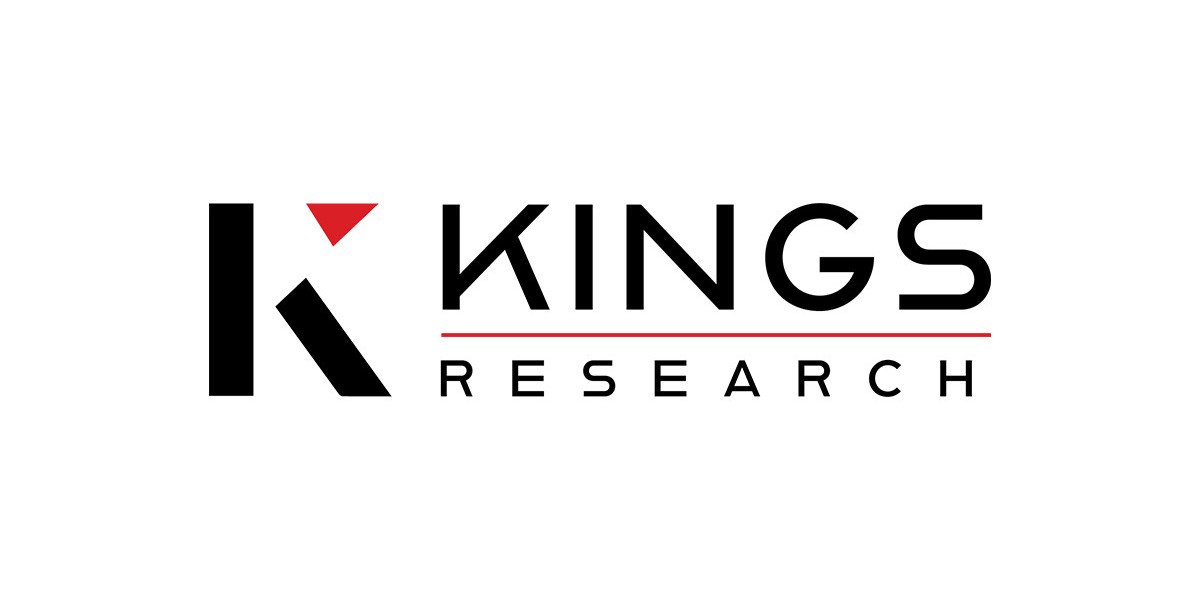Process Safety Management (PSM) and Environmental, Social, and Governance (ESG) compliance have a pragmatic link to each other in Malaysias industrial situation. PSM involves systematic identification, evaluation, and mitigation of risks from highly hazardous processes, promoting safe operations in various sectors.
ESG compliance focuses on long-term sustainability, social impact, and corporate governance. Collectively, they form a framework that advances safety and sustainability. In Malaysia, embracing PSM within ESG compliance not only bolsters industry standards but demonstrates a commitment to environmental stewardship and social responsibility.
Such alignment empowers organizations to stay in line with local regulations such as the Occupational Safety and Health Act. It empowers them to achieve global ESG compliance. When these two principles are combined, companies can ensure their operations are safe, environmentally friendly, and pursued sustainably over the long term.
What Is ESG Compliance
Definition of ESG Compliance
ESG compliance refers to following a structured framework that ensures businesses address environmental, social, and governance factors in their operations. These three pillars emphasize the responsibility to minimize environmental impact, create social equity, and uphold ethical governance. For example, companies in Malaysia may begin using renewable energy or better labor practices to meet these requirements.
Aligning day-to-day operations with ESG compliance criteria and standards will help you stay ahead of evolving legal and industry regulations. This is not only an indication that they are appeasing authorities, but it creates measurable and transparent benchmarks for corporate sustainability.
The maritime industry has made slow steaming the new normal to increase fuel efficiency. This strategy shows the broader influence ESG compliance can have in advancing more sustainable and equitable decision-making.
As an alternative, ESG compliance acts as a one-size-fits-all standard to measure a companys sustainability initiatives. In fact, one of the early studies found that companies with high ESG scores significantly correlate with high employee satisfaction. This finding indicates that prioritizing these criteria can help foster an engaged workplace climate.
Importance of ESG in Business
The impact of ESG initiatives on our financial performance and long-term value creation is substantial. By taking action on environmental and social risks, businesses become more attractive to a growing pool of investors focused on ESG factors.
One case is how financial institutions in Malaysia are often required to favor companies that show strong ESG practices, similar to trends seen in Singapores maritime industry.
Moreover, ESG compliance strengthens stakeholder trust and corporate reputation. Certified third-party assessments showcase a companys dedication to eliminating unsustainable practices and human rights violations.
In the shipping industry, this credibility attracts investors and creates a competitive edge.
Key Components of ESG Compliance
Component | Criteria |
Environmental | Emission reductions, resource conservation, waste management, and sustainable production. |
Social | Labor rights, diversity, community impact, and supply chain ethics. |
Governance | Ethical leadership, transparent reporting, and anti-corruption measures. |
Each piece is essential to understanding and developing a winning strategy on the business side. A world of good.
For example, environmental initiatives such as slow steaming help lower carbon emissions, and ethical governance increases transparency with stakeholders.
When combined, these elements form an efficient, equitable foundation for operations thats good for the environment and the economy. This interdependence guarantees that Malaysian enterprises satisfy ESG objectives comprehensively, in line with the global compliance wave such as that seen in Hong Kong.
Understanding Process Safety Management
Definition of Process Safety Management
Process Safety Management (PSM) is a set of management practices aimed at preventing the catastrophic release of highly hazardous chemicals. Its centered around a philosophy of practices and principles designed to reduce risk in operations. At its heart, PSM protects workers, their communities, and the environment from the dangers posed by certain industrial processes.
In industries such as chemical processing, one slight deviation in safety procedures could result in catastrophic outcomes. Thats where Process Safety Management (PSM) comes in. Not only does effective PSM allow one to go above and beyond regulatory requirements, it shows true corporate accountability.
The Petroleum Development Act 1974 and OSHA 1994 in Malaysia emphasize the serious importance of safety management. They focus not just on certain industries, but on larger occupational health and safety issues. Beyond mere compliance, adherence to these regulations reinforces a companys operational integrity and fosters a culture of trust among employees and the communities they serve.
Core Elements of PSM Framework
The PSM framework integrates various elements that collectively foster a robust safety culture. It promotes in-depth familiarity with hazardous materials and equipment.
Risk Management: Identifies, evaluates, and mitigates process-related risks. It also develops the changes in processes or systems to eliminate hazards.
Take for instance the Bowtie diagram, one of the most popular tools used across industries to efficiently visualize risks and monitor controls. Including these elements in your day-to-day operations not only fortifies compliance but minimizes workplace accidents and creates more efficient workflows.
Importance of PSM in Industries
Fossil fuel industries such as oil and gas, manufacturing, and chemical processing depend on PSM to minimize hazards and keep workers safe. By preventing incidents, employers do more than protect employeesthey protect productivity.
PSM prevents more than accidents. Going a step further, PSM intersects with ESG (Environmental, Social, and Governance) compliance directly. By 2022, 63% of companies faced challenges with consistent sustainability ratings. Tangible business benefits arise from adopting effective PSM practices, which can help close this gap and assist companies in realizing their sustainable business goals.
In Malaysia, the Petroleum (Safety Measures) Act 1984 and accompanying regulations emphasize the importance of process safety. Asset integrity managementconceptually and legally linked to PSMensures that operational systems operate reliably and reliably increasing both safety and sustainability.
Current ESG Compliance in Malaysia
Overview of ESG Regulations in Malaysia
With the increasing influence of ESG regulations on Malaysian businesses, the Sustainability Reporting framework of Bursa Malaysia serves as a notable impetus. The new requirements affect publicly-listed companies, which are required to report the sustainability practices, including the economic, environmental, and social effects.
This third party, independent reporting provides important accountability and alignment with best practices and global standards. Regulatory bodies such as the Securities Commission Malaysia and the Department of Environment have stepped up enforcement efforts. They accomplish this by enacting strict sustainability requirements and directives.
National government initiatives, like Malaysias Roadmap Towards Zero Single-Use Plastics, further emphasize the national sentiment towards environmental responsibility. Failure to comply with these frameworks may lead to reputational damage, financial penalties, or limited access to markets.
For example, if a company does not comply with ESG related environmental standards, it could experience an operational shutdown or diminished investor trust.
Challenges in ESG Adoption Locally
Though there have been advancements, businesses in Malaysia still encounter significant obstacles in integrating ESG practices. Lack of awareness particularly among small and medium enterprises (SMEs) usually hinders a timely adoption.
Most companies do not have the financial and technical capacities to fulfil ESG requirements. Additionally, the sheer complexity of regulations can daunt firms, especially those new to sustainability reporting.
Cultural resistance is important too. Industries like fossil fuels often prioritize short-term profits over long-term ESG goals. Education and training programs that fill these gaps are key.
Through knowledge creation, Malaysian companies will be better equipped to work through these barriers and create more natural integration of ESG into their operations.
Drivers for ESG Implementation in Malaysia
There are a number of forces that are driving ESG adoption. Investor demand, for example, is a powerful driver, as stakeholders around the world are focusing more on companies demonstrating leadership on ESG issues.
International factors, like the push towards renewable energy and more sustainable practices, push Malaysian companies to stay competitive. Corporate social responsibility (CSR) initiatives further emphasize the power of ESG, demonstrating how businesses can create change within communities.
Proactively embracing ESG will provide numerous competitive advantages. Companies that implement powerful ESG strategies are more likely to gain new investors and have increased customer loyalty.
When businesses shift their practices towards the sustainability movement, they go beyond simply fulfilling compliance and discover opportunities for growth.
How PSM Aligns with ESG Compliance
1. Linking PSM to Environmental Goals
Process Safety Management (PSM) aligns closely with achieving ESG environmental goals by minimizing emissions and waste. For instance, good management of chemical processes can prevent dangerous releases into the environment. Hazard analysis within PSM frameworks helps identify risks like potential leaks or spills and ensures preventive measures are in place.
Best of all, this proactive approach works to protect our environment before harm can be done. Moreover, it is consistent with Environmental, Social, and Governance (ESG) compliance standards focusing on environmental sustainability. Continuous improvement is at the heart of PSM.
Frequent environmental audits and a culture that encourages constantly improving safety protocols help improve environmental performance year on year.
2. Enhancing Social Responsibility Through PSM
By implementing PSM, you will encourage a culture of safety and compliance that protects your employees and stakeholders. By prioritizing accident prevention, companies uphold their social responsibility, creating a safe workspace for employees while protecting communities theyre located in.
Immediate actions, such as providing regular safety training and conducting emergency drills, can improve preparedness and lower risk. PSMs focus on transparent communication supports many ESG efforts, including building trust with stakeholders.
Companies that actively engage with communities through open dialogue and safety updates showcase their commitment to social impact, further strengthening their ESG compliance.
3. Strengthening Governance with PSM Practices
Strong governance is a basis for PSM, as is ESG compliance. PSM sets forth strict accountability by designating specific roles and responsibilities for safety oversight. This helps to meet regulatory and liability obligations such as Malaysias OSHA 1994 and improves operations in line with global safety standards.
Leadership commitment is key herewhen company leaders advocate for PSM, it shows the companys overall commitment to governance.
4. Supporting ESG Monitoring and Reporting
PSM data becomes a key asset for ESG reporting, providing extensive coverage of safety incidents, risk management, and environmental performance. Metrics like incident rate or emissions reduction are easily tracked and monitored, allowing organizations to show progress towards ESG goals.
Technology will be key to doing this. Digital tools can expedite the influx of data required and help maintain the integrity of consistent, timely reporting. In fact, companies using such tools are not just streamlining their ESG disclosures, they are driving better decision-making.
Benefits of PSM for ESG Compliance
Improving Workplace Safety and Sustainability
Implementing Process Safety Management (PSM) directly improves workplace safety by identifying risks and preventing accidents in high-risk industries like oil and gas or manufacturing. This prevention-oriented mindset protects workers, preventing more injuries and creating a culture of safety.
In the long run, this commitment to safety has a direct and favorable effect on employee morale and productivity. Workers immediately feel a sense of value, resulting in increased engagement and decreased turnover.
Beyond fulfilling ESG compliance, PSM fits with a vision of sustainability that emphasizes the reduction of resource waste and environmental destruction. For example, good maintenance practices prevent leaks and emissions, making a companys operations greener by default.
When safety and sustainability are brought together, organizations create a strong foundation that bolsters their ESG objectives.
Reducing Environmental Risks and Liabilities
PSM helps organizations identify potential environmental risks early, such as chemical spills or emissions, and implement controls to prevent incidents. Additionally, for example, industries that use, store, or transport hazardous materials are better served by regular safety audits and plans for emergency response.
Those actions help prevent the types of expensive environmental harm that can lead to liability and litigation. Reducing these risks reduces the financial liabilities associated with such risks, such as regulatory penalties or the costs of site remediation.
Companies that invest in risk management do more than just best protect the environmenttheyre investing in their own financial resilience.
Enhancing Corporate Reputation and Trust
Sustainable, effective PSM shows a companys commitment to the highest safety and social responsibility standards. This commitment goes a long way in boosting public perception, allowing businesses to build stakeholder trust.
Being transparent in reporting safety measures and environmental performance builds accountability into processes, further bolstering reputation. Engaging stakeholdersfrom employees to investorsbuilds long-term trust and loyalty.
Meeting Regulatory and Investor Expectations
Malaysias regulatory framework places significant emphasis on safety and compliance with ESG standards. This core principle of PSM goes hand-in-hand with these laws, helping companies to operate safely and protect the environment.
As investors continue to prioritize ESG factors, businesses that do not follow suit risk losing investments. By adopting more proactive compliance strategies, companies can reassure investors and stakeholders while securing a competitive advantage.
Strategies to Integrate PSM with ESG Goals
Assessing Current PSM and ESG Practices
Conducting assessments is a critical first step in understanding how well current practices align with both PSM and ESG goals. These assessments uncover strengths and weaknesses in existing systems, helping organizations build a solid foundation for integration.
Gap analysis plays a key role here. By identifying discrepancies between current practices and desired outcomes, companies can focus on specific areas requiring improvement. For example, a chemical plant might find that its waste management aligns with ESG goals but lacks robust incident response protocols under PSM.
Stakeholder input is essential during this process. Engaging employees, regulators, and community members ensures the assessment reflects diverse perspectives, making it more comprehensive and actionable.
Setting Clear Objectives for Integration
With clear, measurable objectives, it is easy to identify strategies that more deeply integrate PSM and ESG goals. For example, a manufacturing company could set targets to both cut its greenhouse gas emissions by 20% and improve its workplace safety procedures.
Leadership is key in making this all happen. When executives actively champion these objectives and hold teams accountable, alignment becomes a collective priority.
Communication is just as important. Communicating these goals throughout the hierarchy of the organization, from upper management down to workers in the field, promotes accountability and supports inclusiveness.
Implementing Combined PSM and ESG Initiatives
Creating programs to achieve PSM and ESG goals simultaneously takes thoughtful strategy. For instance, the same infrastructure investment of installing the automated monitoring systems would improve safety and lower environmental impact at the same time.
This is where cross-functional collaboration is incredibly key. Teams from safety, environmental, and operational departments must collaborate to make sure initiatives serve all priorities.
Malaysian companies have had notable achievements in this field. For example, oil and gas companies are already deploying carbon capture technologies in combination with advanced safety measures to capture dual benefits.
Monitoring Progress and Continuous Improvement
Regularly measuring and monitoring progress goes a long way to making sure the integration of PSM and ESG goals stays on course. Performance indicators, like incident rates or the need for emission reductions, offer objective, quantifiable targets.
Periodic audits hold us accountable and allow for a holistic view so that no area of safety or sustainability is compromised or neglected. Creating a culture of continuous improvement is essential for long-term success.
Organizations can achieve this by regularly updating strategies based on advancements in technology or shifts in regulatory requirements, ensuring they stay ahead of potential challenges.
Future Trends in PSM and ESG Compliance
Emerging Technologies Supporting PSM and ESG
Technology is changing the game for companies in how they manage Process Safety Management (PSM) and ESG compliance. Advanced data analytics and automation tools help to make these often complex tasks much easier. They help streamline the monitoring of safety systems and tracking of sustainability goals.
Real-time sensors deployed in industrial facilities can provide immediate alerts to potential safety risks. At the same time, automated reporting software ensures precise ESG disclosures. These technologies eliminate human error, and they decrease time spent on tedious tasks so organizations can turn their attention toward strategic improvements.
Moreover, the increased use of digital platforms makes transparency and accountability easier than ever. Cloud-based systems make real-time data sharing across stakeholders easy, maintaining consistency across reporting. For example, a manufacturing plant using automated dashboards can track emissions levels in metric tons and adjust operations to meet sustainability targets.
Investing in these technologies not only increases operational efficiency, it establishes credibility and trust with regulators and investors.
Increasing Focus on Sustainability Metrics
Sustainability metrics are quickly becoming the centerpiece of corporate evaluation. From water usage in cubic meters to energy consumption in kilowatt-hours, these metrics offer concrete means of gauging progress. Businesses that take the lead on these indicators will often find themselves ahead of the competition, as accountability is ever more sought after by stakeholders.
Creating specific baselines, such as a 10% reduction in carbon emissions per year, help keep companies accountable and focused.
Outlook for PSM-Driven ESG Compliance
The outlook for PSM and ESG compliance in Malaysia is challenging but optimistic. Regulatory standards are continuing to tighten, and stakeholdersfrom investors to regulators to the publicare increasingly calling for greater transparency.
Companies that adopt proactive measures, such as integrating safety audits with ESG strategies, are better positioned to meet long-term goals.
Conclusion
Process Safety Management (PSM) is paramount in ensuring ESG compliance and can show a direct alignment to the ESG compliance in Malaysia. Along with fostering safer operations, reducing overall risks and hazards, PSM helps companies with their ESG compliance efforts and environmental sustainability initiatives. By prioritizing real-world impacts, such as creating safer environments and minimizing environmental damage, PSM naturally connects with ESG principles. Incorporating PSM Companies build public and investor trust, comply with emerging regulations, and create long-term value and sustainability.Working with a trusted process safety consultantcan help businesses effectively integrate PSM into their ESG strategies, ensuring long-term sustainability and compliance.
For Malaysian businesses, adopting PSM goes beyond regulatory compliance. It unlocks opportunities for improved ESG performance, enhanced local relationships, and increased competitive advantage. As the emphasis on ESG compliance climbs higher on the corporate agenda, ensuring that PSM complements these objectives delivers tangible value.
Begin your preparations today. Ensure ESG compliance through PSM, while developing operations that are safer and more socially responsible. Its the right thing to do, and a good investment in our future.









